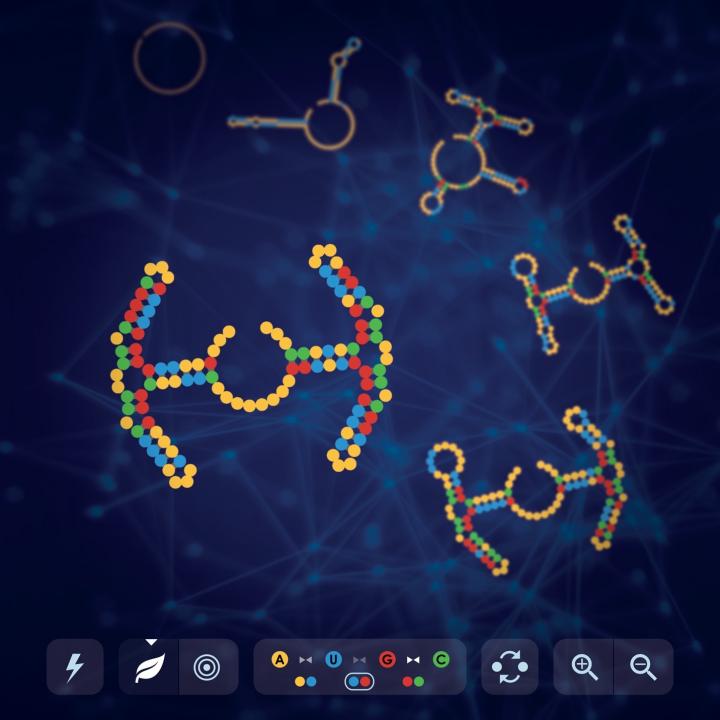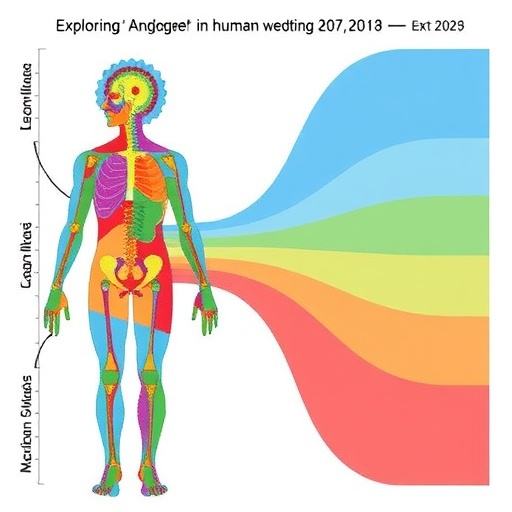Neural network approach could aid efforts to build biomedically useful RNA structures

Credit: Koodli et al.
A new artificial-intelligence tool captures strategies used by top players of an internet-based videogame to design new RNA molecules. Rohan Koodli and colleagues at the Eterna massive open laboratory present the tool, called EternaBrain, in PLOS Computational Biology. Eterna is directed by the lab of Prof. Rhiju Das at the Stanford University School of Medicine in California.
Found naturally in all living cells, RNA molecules perform essential biological functions. Recent years have seen strong interest in designing new RNA structures for use in cancer treatment, CRISPR gene editing, and more. However, every RNA structure consists of a long sequence of four building blocks, and determining the precise sequence needed to build a given structure can be computationally difficult.
In the new study, Koodli, Das, and colleagues carried out research through the Eterna internet-based videogame, a citizen-science initiative to tackle the computational challenges of RNA design. Eterna presents each player with a target RNA structure, and the player attempts to discover an RNA sequence that allows the finished molecule to fold into the desired shape. Some players outperform the best computer-automated methods in solving these challenges.
Using a dataset of 1.8 million design choices made by Eterna players, the researchers discovered an artificial neural network that captures some of the predilections and strategies of these experts. Called EternaBrain, this approach can predict the choices of the best players with significantly better accuracy than achieved by random guessing. An extended EternaBrain algorithm performs similarly or better than previously developed algorithms in solving Eterna challenges.
“Our findings suggest that it should be possible to create automatic algorithms for computer RNA design that emulate or outperform human RNA designers,” Das says. “But we’re not there yet; we still have a lot to learn from both gamers and AI researchers.”
Next, the researchers will see if they can outperform top players by integrating EternaBrain with other computational approaches to RNA design. “We also hope to apply EternaBrain to more complicated problems being tackled by Eterna players, including the design of RNA computers and 3D machines, and the learning of design rules from actual wet-lab data,” Das says.
###
In your coverage please use this URL to provide access to the freely available article in PLOS Computational Biology:
https:/
Citation: Koodli RV, Keep B, Coppess KR, Portela F, Eterna participants, Das R (2019) EternaBrain: Automated RNA design through move sets and strategies from an Internet-scale RNA videogame. PLoS Comput Biol 15(6): e1007059. https:/
Funding: We acknowledge funding from a Stanford Graduate Fellowship (to B.K.), the U.S. National Institutes of Health (R01 GM100953 and R35 GM122579 to R.D.), and a Discovery Innovation Award (Stanford University School of Medicine to R.D.). The funder websites are: https:/
Competing Interests: The authors have declared that no competing interests exist.
Media Contact
Hanae Armitage
[email protected]
Related Journal Article
http://dx.




